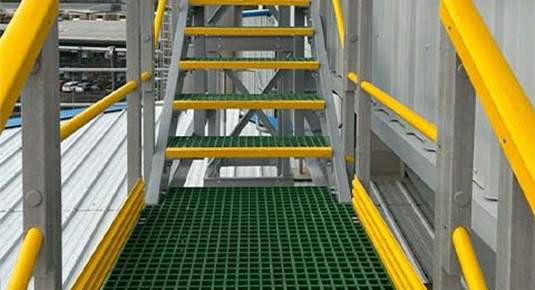loading...
- No. 9, Xingyuan South Street, Dongwaihuan Road, Zaoqiang County, Hengshui, Hebei, China
- admin@zjcomposites.com
- +86 15097380338
- Welcome to visit our website!
walkway frp
Exploring the Benefits of Walkway FRP A Sustainable Solution for Modern Infrastructure
In recent years, the construction industry has seen a shift toward more sustainable and efficient materials, driven by the need for environmentally friendly solutions and increased durability. One such innovative material that has gained prominence is Fiber Reinforced Polymer (FRP). Specifically, walkway FRP has emerged as a popular choice for outdoor pathways, bridges, and various architectural applications. This article explores the benefits of walkway FRP and why it is becoming a preferred material in modern infrastructure.
What is Walkway FRP?
Walkway FRP is made from a polymer matrix reinforced with fibers, usually glass or carbon. This combination results in a lightweight yet incredibly strong material. Walkway FRP is typically manufactured in molded shapes or panels, making it versatile for various applications. Its primary features include high corrosion resistance, excellent mechanical properties, and adaptability to diverse design requirements.
Advantages of Walkway FRP
1. Durability and Longevity One of the standout characteristics of walkway FRP is its exceptional durability. Unlike traditional materials such as wood or metal, which can decay, corrode, or rust over time, FRP is impervious to many environmental factors. It withstands harsh weather conditions, UV exposure, and chemical attacks, making it ideal for use in coastal areas or locations with extreme climates. The longevity of FRP decreases the need for frequent repairs or replacements, leading to lower lifecycle costs.
2. Lightweight and Easy to Install Walkway FRP is significantly lighter than conventional materials. This characteristic simplifies transportation and handling, reducing labor costs and installation time. Contractors can quickly assemble walkway systems, leading to more efficient project completion. The lightweight nature also reduces the load on underlying structures, allowing for greater flexibility in design.
walkway frp

3. Safety Features Safety is paramount in any infrastructure project, and walkway FRP offers several safety features. Its slip-resistant surface can be manufactured with various textures to enhance traction, minimizing the risk of accidents. Additionally, FRP does not conduct electricity, making it a safe choice near electrical installations or in storm-prone regions.
4. Sustainability As the world leans toward sustainable construction practices, walkway FRP stands out as an eco-friendly option. The manufacturing process consumes less energy compared to metal production, and many FRP products are made using recycled materials. Additionally, the long lifespan of walkway FRP minimizes waste and reduces the carbon footprint associated with frequent replacements.
5. Aesthetic Flexibility Walkway FRP can be produced in various colors, shapes, and designs, allowing architects and designers to create visually appealing solutions that blend seamlessly with the surrounding environment. Whether used in public parks, private walkways, or commercial spaces, FRP can accommodate diverse aesthetic requirements without compromising functionality.
Applications in Modern Infrastructure
The versatile nature of walkway FRP is evident in its applications across various sectors. It is commonly used for boardwalks, pedestrian bridges, access ramps, and industrial walkways. In addition to recreational areas, walkway FRP can also be integrated into commercial buildings, offering a durable yet attractive solution for high-foot-traffic areas.
Conclusion
Walkway FRP is revolutionizing the way we approach modern infrastructure by offering an array of benefits, from durability and safety to sustainability and aesthetic appeal. As cities worldwide focus on developing more resilient and environmentally friendly infrastructures, the adoption of walkway FRP is likely to continue to grow. Its unique properties make it a prime candidate for future projects, ensuring that our public spaces remain safe, functional, and visually engaging for years to come. As we seek solutions to the challenges posed by traditional materials, walkway FRP stands out as a forward-thinking choice in the construction landscape.
-
The Rise of FRP Profiles: Strong, Lightweight, and Built to LastNewsJul.14,2025
-
SMC Panel Tanks: A Modern Water Storage Solution for All EnvironmentsNewsJul.14,2025
-
GRP Grating: A Modern Solution for Safe and Durable Access SystemsNewsJul.14,2025
-
Galvanized Steel Water Tanks: Durable, Reliable, and Ready for UseNewsJul.14,2025
-
FRP Mini Mesh Grating: The Safer, Smarter Flooring SolutionNewsJul.14,2025
-
Exploring FRP Vessels: Durable Solutions for Modern Fluid HandlingNewsJul.14,2025
-
GRP Structures: The Future of Lightweight, High-Performance EngineeringNewsJun.20,2025
